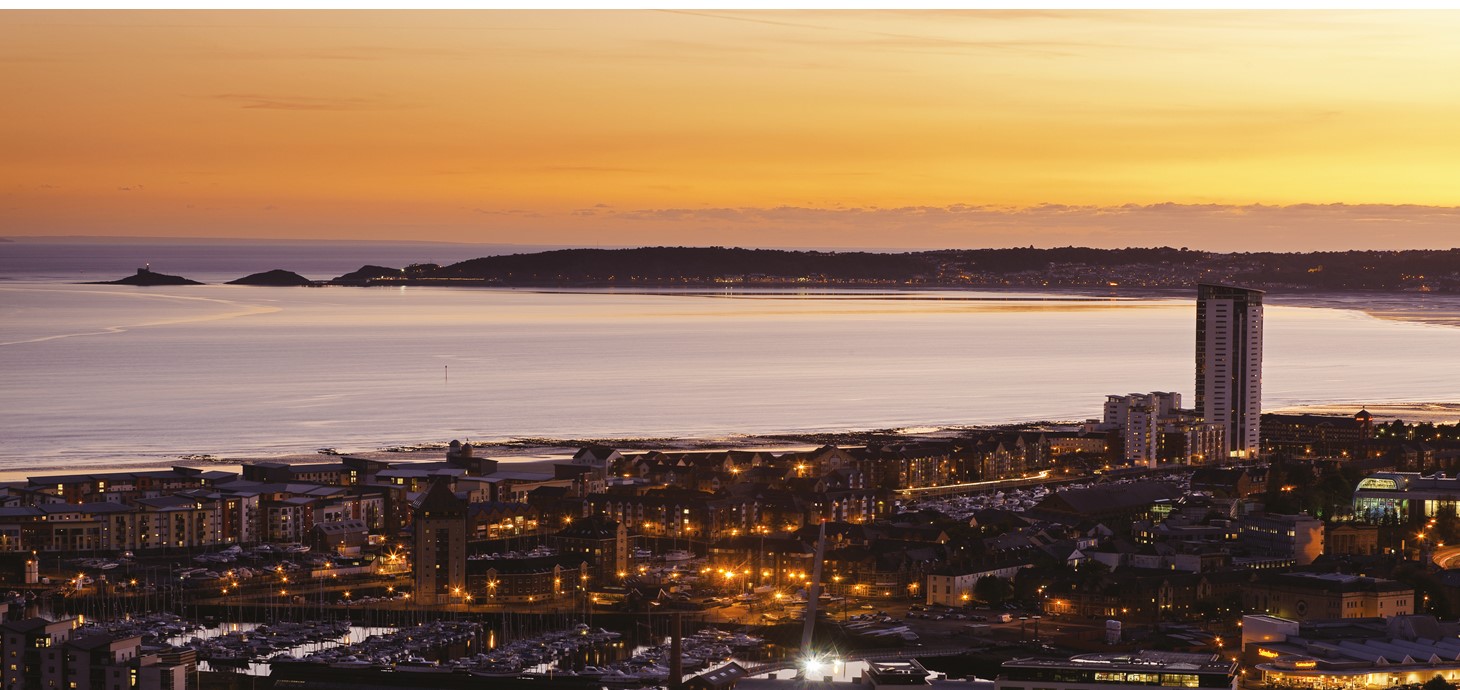These articles are now archived and will no longer be updated.

Swansea city centre and Bay at sunset: researchers have shown the greatest impacts on marine life in the bay are from waves and tides rather than human activity
The biggest impacts on the sea life in Swansea Bay come from waves and tides rather than human activity, a wide-ranging new study - encompassing over 170 species of fish and other sea life such as crabs, squid and starfish - has revealed.
Combining data on species, human impacts, and wave and tide patterns, the study, by a Swansea University team, provides the most comprehensive picture to date of the factors that drive change in Swansea Bay.
It will give planners a better understanding of the Bay and of the potential impacts of new developments on its ecosystem.
With its two urban centres in Swansea and Port Talbot, Swansea Bay is home to around 290,000 people and is a centre for industry, including a large steelworks and two ports. It has the second highest tidal range in the world, as Atlantic tides are funnelled into the narrowing Bristol Channel and then spread across the shallow bay.
For scientists studying what’s happening to the environment, highly-urbanised coastal areas like Swansea Bay present a problem. There are so many different natural and human influences on the environment that it can be difficult to disentangle them, or to work out which are the most significant.
Yet without this knowledge of the full picture, planners and environmental managers cannot make the best decisions about ecological impact.
This is where the new research comes in. The Swansea team, which included a biologist and engineers, gathered data on species, human impacts and wave and tide patterns and fed it into a statistical model. This meant they could then assess the significance of different factors.
They found that:
- The waves and tides had a bigger impact on the Bay than human activity
- Waves and tides accounted for over half of all the variation in species that was observed
- Different species were affected by different factors, and to varying degrees – for example, dredge spoil disposals had the biggest impact on fish, whereas marine life was not affected by wastewater discharge.
The impetus for this study came from the tidal lagoon project, which revealed that there were gaps in our understanding of Swansea Bay, a highly-used, urbanised coastal ecosystem. So the Swansea University team, who had been working on separate studies, joined forces to produce this new research as part of SEACAMS, an EU-funded initiative focusing on marine renewable energy.
Dr Ruth Callaway of the College of Science at Swansea University, who led the work, said:
“It may be a surprise given that it is a highly-urbanised area, but the biggest impact on the ecology of Swansea Bay are the waves and tides. Our research shows that these natural factors shape the marine life more than human activity, such as wastewater discharge and discarding dredged material.
However, Swansea Bay remains a complex ecosystem that has been changed dramatically over the past centuries, and we need as full a picture as possible of impacts on it. That’s what our research findings will help to provide.”
Other researchers involved were Dr Iain Fairley and Dr Jose Horrillo-Caraballo of Swansea University College of Engineering.
The research was published in “Science of the Total Environment”.
